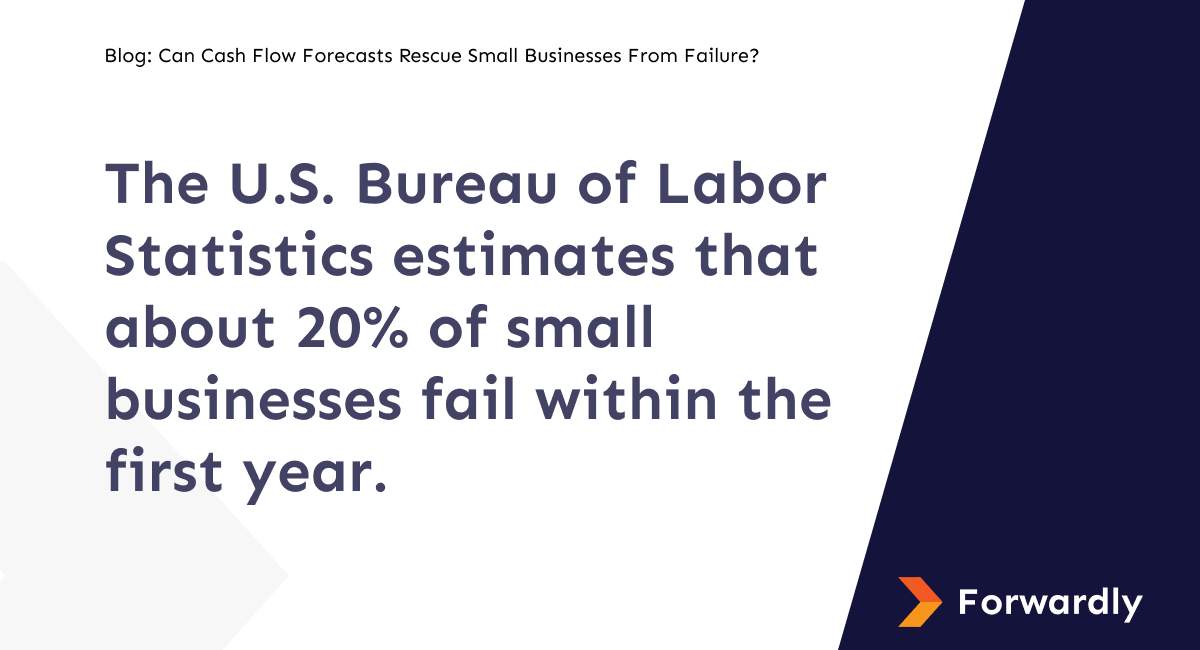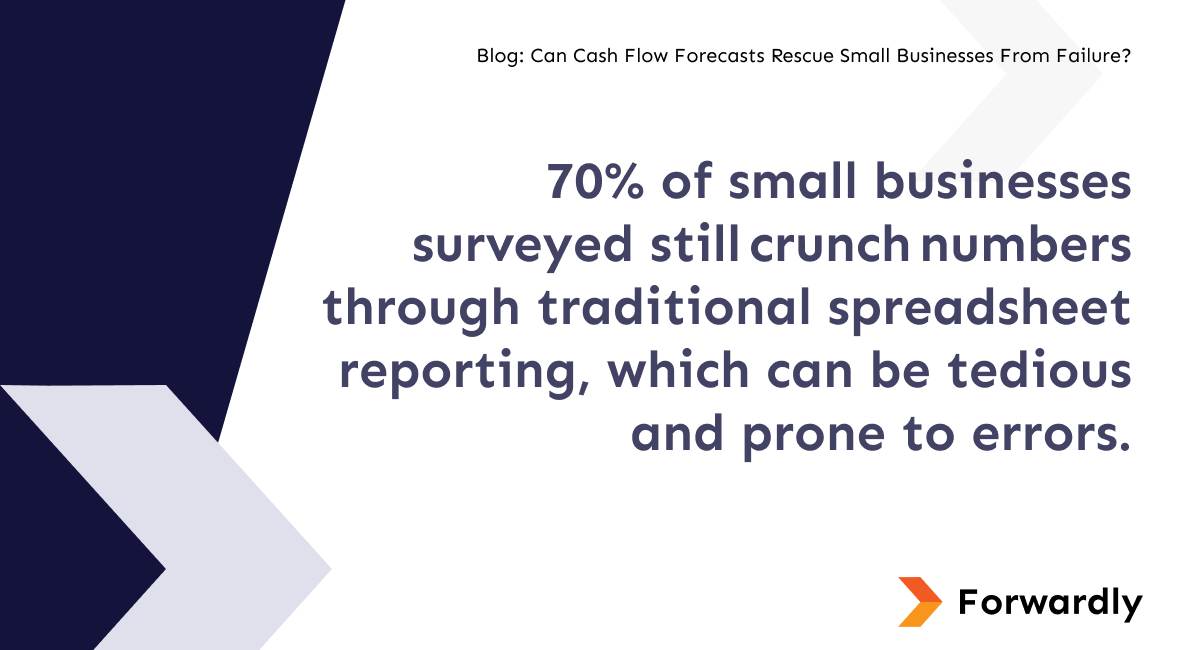Originally featured on Forbes.com in 2023, this updated article provides a fresh perspective on cash flow forecasts for a 2024 audience.
Money management and cash flow are consistently cited as some of the top reasons that small and midsize businesses (SMBs) fail. The U.S. Bureau of Labor Statistics estimates that about 20% of small businesses fail within the first year. Roughly half survive five years and only about a third manage to make 10 years. These statistics highlight the critical importance of effective financial management in the world of SMBs.

The challenge of cash flow for small businesses
SMBs rarely think about the true cost of business when they first launch. In a survey of more than 300 small businesses, half of the respondents didn’t even have a documented budget in 2020. Many small businesses, even profitable ones, work within slim margins with little wiggle room for large purchases or economic setbacks. Factor in debt repayments, delinquent payments, and unpaid invoices and you have a business that’s walking a very tightrope. One report suggested that 31% of SMBs have up to two months of working capital, while 58% only have enough to last three to five months.
While there are different ways businesses can be cash flow positive, SMBs that prioritize recovering unpaid invoices can get there much faster. A survey by QuickBooks showed that midsized businesses surveyed were owed $304,066 on average in late customer payments, and 81% of these respondents said that “their customers had been late on their payments more often in 2021 compared to previous years.” That’s money earned but not available to spend. By narrowing their payment window, businesses can ensure they’re paid much faster so they have the capital they need to make necessary payments and invest where needed.
Businesses can also top up with an early payment discount to speed up cash flow. But if you continuously offer a 2% early payment discount, you’re effectively getting an annual interest rate of 44.6%. Business owners offering early payment discounts need to actually raise their invoices to offset this price, so if clients pay in 30 days, they make an extra 2%, and if they pay early, then owners make what they expected.
Why cash flow forecasting is the answer for small businesses
Having cash on hand to take advantage of vendor discounts or stockpile supplies amid global supply chain issues can make or break a business. Cash flow forecasts answer a simple question that confronts most business owners when they begin to scale: Will we have the money to do what we want to do in the next six months? Forecasting measures future financial performance by tracking all expenses and receipts—even the most irregular ones like utility bills—so businesses can anticipate how much revenue they’ll have in a given period and plan for expenses accordingly.
Short-term and long-term forecasting
Direct or short-term forecasting looks at the inflow-outflow of cash for up to six or so months, evaluating past and anticipated expenses like supplier payments, as well as collected and incoming customer invoices. If your business is relatively stable, short-term forecasting can be very accurate. Long-term forecasting projects a financial picture that extends from one to five years and commonly relies on data from three standard financial reports, including a profit and loss statement, balance sheet and cash flow statement.
The power of robust forecasting tools
A robust forecasting tool allows owners to recognize when to prioritize stability or grow their business. With the number of software packages available and the advent of cloud-based systems, it’s a surprise that as recently as five years ago, 70% of small businesses surveyed still crunch numbers through traditional spreadsheet reporting, which can be tedious and prone to errors. SMBs can help improve their cash flow forecasts by relying on AI and ML software that churn out accurate insights about where their business is heading.

Owners who want more control and flexibility in charting out a road map for their business may delve deeper with scenario planning features that model hypothetical situations and outcomes. What would your cash position be if you hired more staff? What if you lose a client? Cash flow forecasts with additional scenario planning will lay it out for you.
Modern payment solutions: The alternative approach
When it comes to budgeting and forecasting tools, SMBs have two primary options: fintech companies and traditional financial institutions. Traditional financial institutions often provide tools that rely on banking data to create financial projections. However, a survey conducted in March 2022 revealed that 55% of SMB owners who use bank-provided cash management systems report experiencing stress when using these tools.
An alternative to traditional banking-based tools is modern payment solutions like Forwardly. These solutions offer a range of benefits, including cash flow forecasting for up to 12 months, affordable B2B instant payments, and free same-day ACH transfers. This streamlined approach can reduce the stress and complexities associated with managing cash flow for SMBs, providing a more user-friendly and efficient solution. Without cash flow forecasts, you’re steering a ship in the dark, much more likely to run out of fuel, hit an iceberg, or drift into bad weather. It’s time to take action and get started.
Originally published on Forbes.com.
 Back to Blog
Back to Blog


